Wouldn’t you love to visit a country that has supermarkets that look like the picture below? A bit off the beaten track, the landlocked Buddhist kingdom of Bhutan has got a lot to offer for nature and an amazingly rich culture.
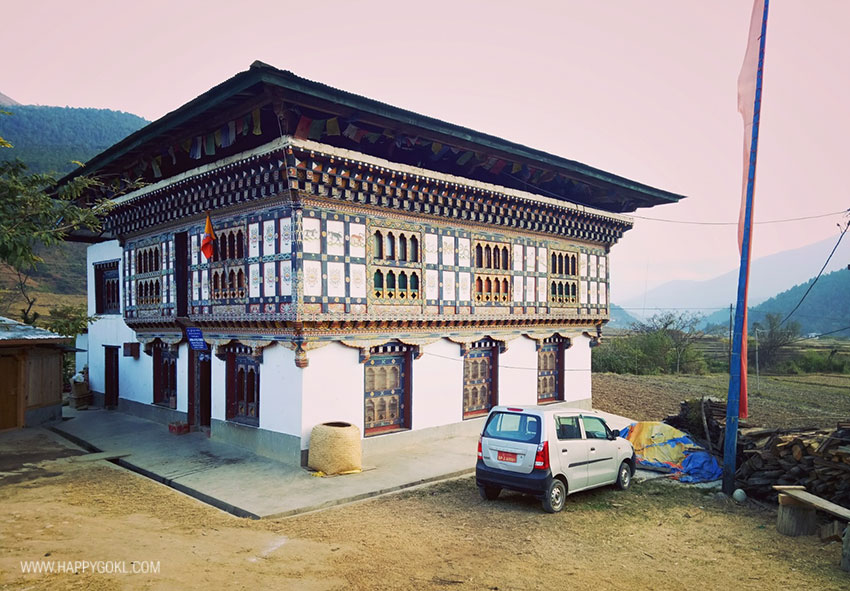
Bhutan is tucked away in the Himalayan mountains between China and India and is known for its innovative Gross National Happiness Index. The GNH measures prosperity by gauging its citizens’ happiness levels, not the GDP (Gross Domestic Product).
There are a few things to keep in mind about travelling to Bhutan, since it has strict rules for visitors. All tourists require a visa and must book through a Bhutanese tour company and hire a guide. Bhutan follows a policy of ‘High Value, Low Impact Tourism’ levying a minimum daily spend for tourists (except some SAARC passport holders) as follows:
- USD200 per person per night for the months of January, February, June, July, August and December.
- USD250 per person per night for the months of March, April, May, September, October and November. More info here.
Getting to Bhutan
The flight from Delhi to Paro is possibly the most scenic one I’ve been on, offering a view of the Himalayan range, including the mighty Everest. Bhutan’s airport, located at Paro, is considered one of the most dangerous airports in the world. We were told only 8 pilots are qualified to land at this perilous airport. It lies on a narrow runway in a valley between two Himalayan mountains, which stand at a height of more than 18000 feet. Many Indiana Jonesesque twists and turns later, we were welcomed by blue skies and crisp clear air.

Landing in Bhutan transports you back in time, maybe a decade or two. It is apparent that modern life has been welcomed at a much slower pace than in most other countries. Mobile phone networks only arrived in 2003 and the TV and internet just four years earlier. Road network construction started only in the 60s, so until then access was all by foot or riding on an animal’s back.
Speaking of roads, a quick mention of the quirky road signs in Bhutan! Some of them include:
- After drinking whiskey, driving is risky
- If you are married, divorce speed
- Be Mr Late, Not Late Mr
All in bold font, they’re hard to miss and help distract one from the rather rash hill driving style the locals seem to favour, hugging all the treacherous curves.
Exploring Thimphu Valley
Our first stop was Thimphu. The capital has a population of around 80,000 and is probably the only capital city in the world without traffic lights. The children were very amused and a little anxious to see how it all worked out!
On the way to our resort, Terma Linca, we stopped at the Tachogang Lhakang bridge at the base of the mountain across the Pa Chu river, originally built in the early 15th century. The present bridge was re-built in 2005, in the traditional style made with interlinked iron chains. Decorated with brightly coloured flags, the bridge starts to sway as you cross it. Make sure you stop once you reach the middle of the bridge and take in the peace and calm of your surroundings. The bridge gets you to the temple, holding relics of Buddha and related deities.
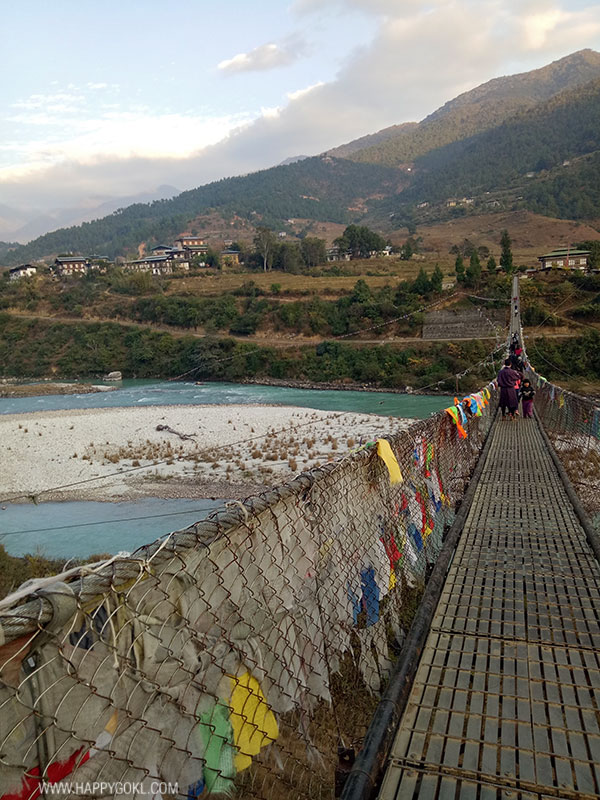
Located in a valley on the banks of the river Wangchhu, Terma Linca resort is surrounded by wide open spaces. We were greeted by friendly staff with a traditional welcome of donning a white scarf and some warm tea. Done up in traditional Bhutanese décor, the rooms are spacious and comfortable, especially for those traveling with families. Central heating not just in the room but in the bathroom too, makes for a cozy stay. All the rooms have a lovely view of the river with the mountains in the background.
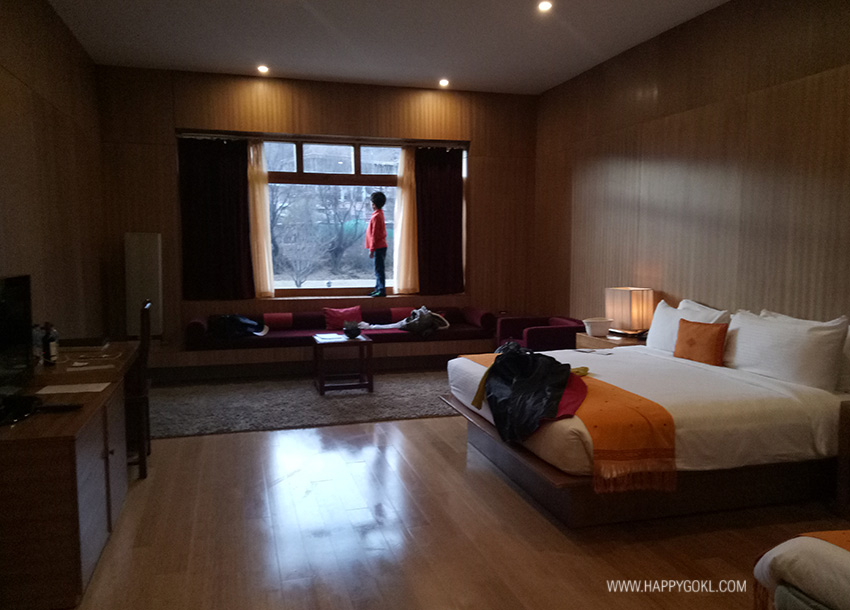
The main restaurant was closed for renovation when we stayed there and Apa’s restaurant was serving all the meals. It is a bit of a walk to this restaurant if you have rooms close to the entrance, especially if you have young children. The place is done up beautifully in vibrant colours and the layout is influenced by local culture. Meals are mainly inspired by Indian flavours and food, with a Bhutanese dish or two thrown in.
Traditional Bhutanese cuisine is minimally influenced by Chinese or Indian cuisine, its immediate neighbours. I was told it borrows heavily from Tibetan cuisine. The national dish is ‘Ema Datshi’ which literally translates to ‘chilli cheese’. The Bhutanese love their chilli. Copious amounts of it. This is probably due to the extreme cold weather conditions. Variations of this dish include potatoes (kewa datshi), beef (shakam datshi) or mushrooms (shamu datshi) in addition to the chilli.
A quick tip: archery is the national sport of Bhutan. Children can give it a try at the resort’s own mini archery field. Make sure you request the hotel’s staff to arrange a complimentary session. So much harder than it looks!
The hotel can also arrange cooking classes and bonfires, but sadly we didn’t have the time to indulge in these activities.
The itinerary
Bhutan can only be explored with a local guide and our itinerary was pretty much decided by him. We started our second day on a beautiful morning by visiting the National Memorial Chorten (a Buddhist shrine). This is a place of daily worship for the locals, evident by the droves of school students zipping in and out alongside the elderly shuffling in, patiently paying homage and whirling prayer wheels. Well maintained, with a look of being recently white-washed, the gleaming structure also pays homage to the king. Lots of walking, while our guide was full of information, which was kept simple, given we had two 7 year olds with us.
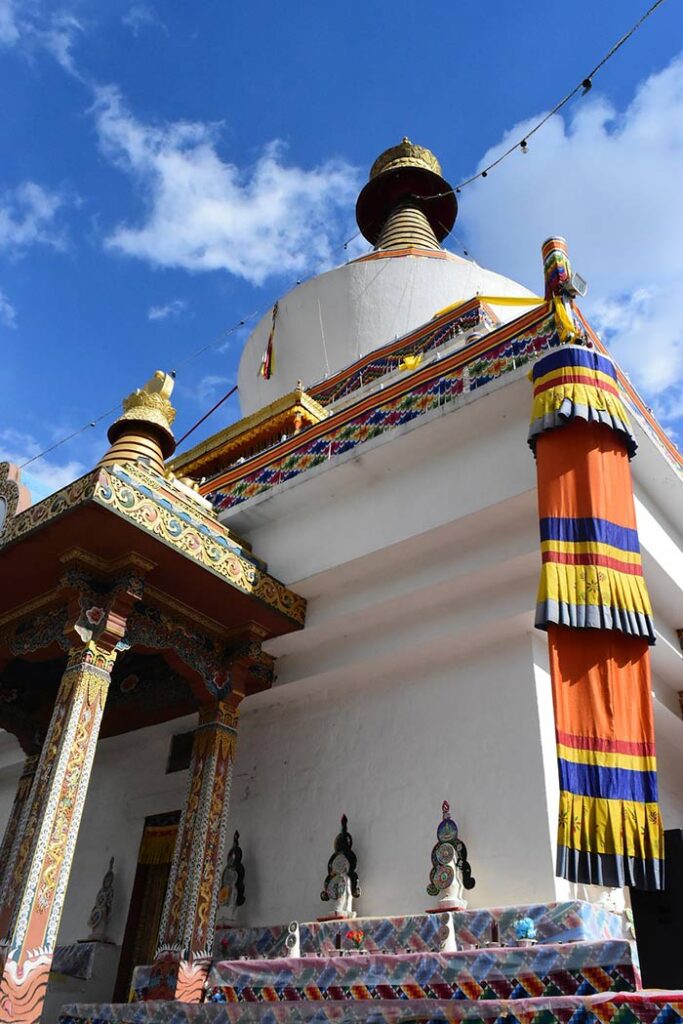
As we headed towards Thimphu Valley, gleaming in the distance on a hill top was what looked like a small Buddha statue. Made of bronze and gilded in gold, it turned out to be a 51m tall statue of the Buddha with an interesting detail: the body is filled with 125.000 smaller Buddhas! The view from this location is stunning, and lots of space to let the children run around explore in awe.
Our meal stops were all pretty non-descript, all pre-decided by our guide and were a usual mix of Bhutanese and North Indian cuisine.
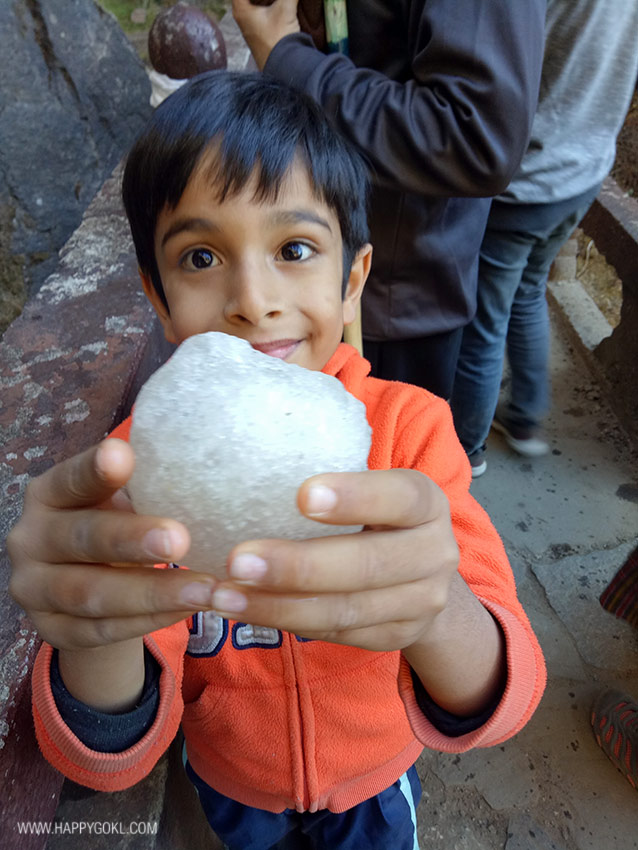
The Motithang Takin preserve
The national animal of Bhutan is the Takin (pronounced tah-kin) and our next stop was the Motithang Takin preserve, where these animals graze freely. There was much excitement, as we didn’t know what to expect. What we did see was a very odd animal, said to be created by a saint with the head of a goat and body of a cow! There are little shops at the entrance of the reserve which have reasonably priced souvenirs; we picked up a few magnets and key chains.
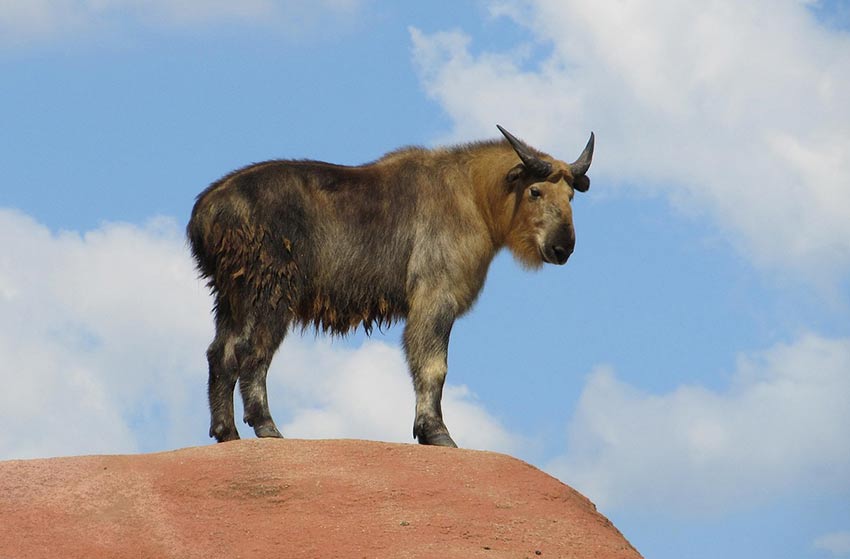
On our way to watch an archery match, we stopped at the Centenary farmers market. It is a great way to see neatly organised, local seasonal produce. Almost all local produce is organic and it’s the farmer’s goal to go completely organic in the next decade.
It is worth stopping to watch an archery tournament at the Changlimithang archery ground. People here take their national sport very seriously. Arrows are flying from one corner of the ground to another (more than 400 feet apart), sent from what looked high-tech bows. However, they seemed to be as adept with traditional bamboo bows, competing against one another, cheered on by traditional song and dance. Games start as early as 6:30 AM and go all the way until sunset.

Up in the mountains
The trip was a packed one, moving from one city to another. We left Thimphu, heading up winding roads to Punakha. At a height of 10,200 feet lies the beautiful Dochu La Pass that connects Thimphu to the eastern part of Bhutan. Also situated here is the Druk Wangyal chorten, 108 stupas which were built to commemorate the lives of Bhutanese soldiers. On a clear day, the pass offers a magnificent view of the Eastern Himalayan range. The Druk Wangyal café nearby is good for a tea break.
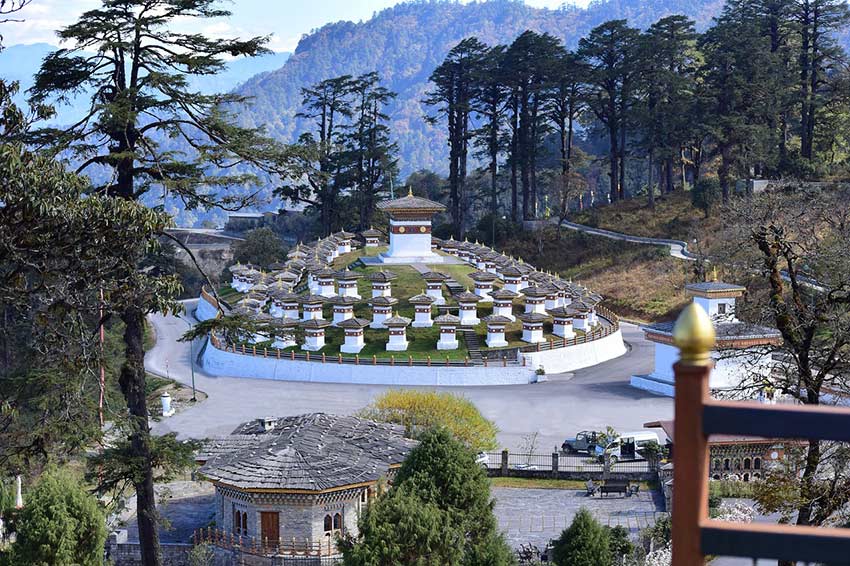
At Punakha, we stayed at the RKPO Green Resort located in the valley. Punakha is much warmer compared to Thimphu. The resort is located a little outside the city, but is worth the drive. It is surrounded by lots of little treks and trails around, but make sure you check with the hotel before setting out. The food served here is the usual mix of Indian and Bhutanese cuisine.
After lunch, we set out for Punakha Dzong. This dzong (a fort) – is supposed to be the most beautiful in the country. Surrounded by towering whitewashed walls, a prominent feature in Bhutan, all of Bhutan’s kings have been crowned within these walls. Don’t miss the assembly hall at the end of the dzong, where beautiful murals depict the life of the Buddha. Your guide will explain the story, which is an interesting recount for children.
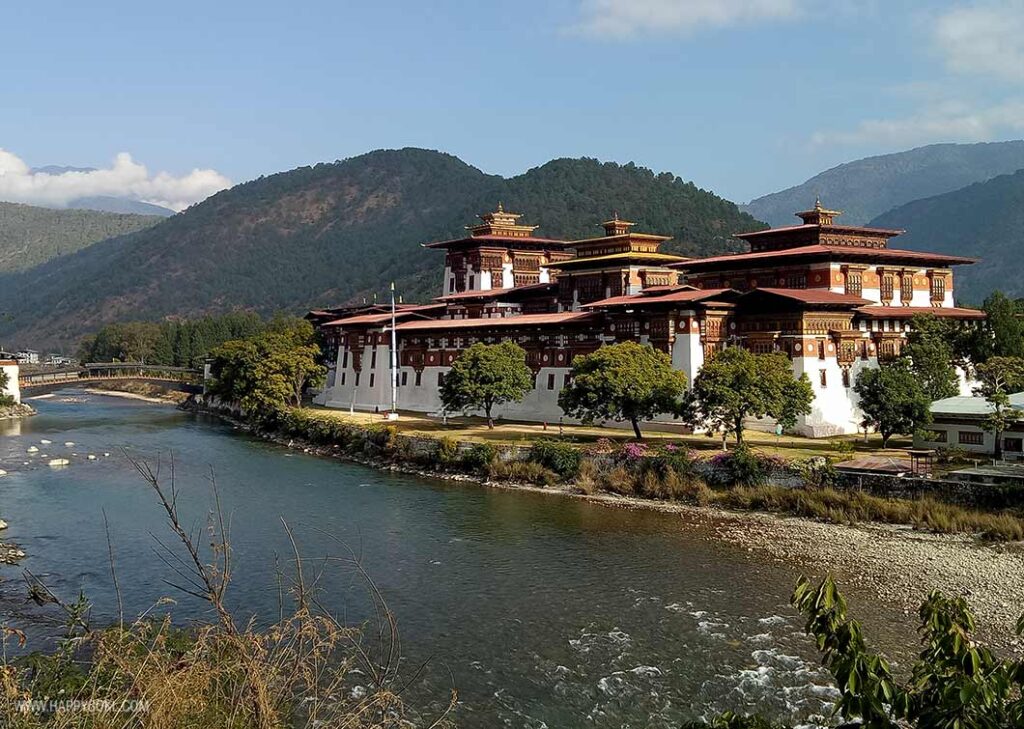
Especially for kids
The rest of our trip was completely catered to the children. We started the day with a trek up to the Khamsum Yulley Namgyal Chorten, a small but elaborately decorated temple. We parked our vehicle by the river below. Carry plenty of water, as it tends to get quite hot. The hike is totally worth the effort, for the amazing views of the valley below. Surrounded by guava trees, our guide plucked the fruits straight off the trees for a refreshing snack.
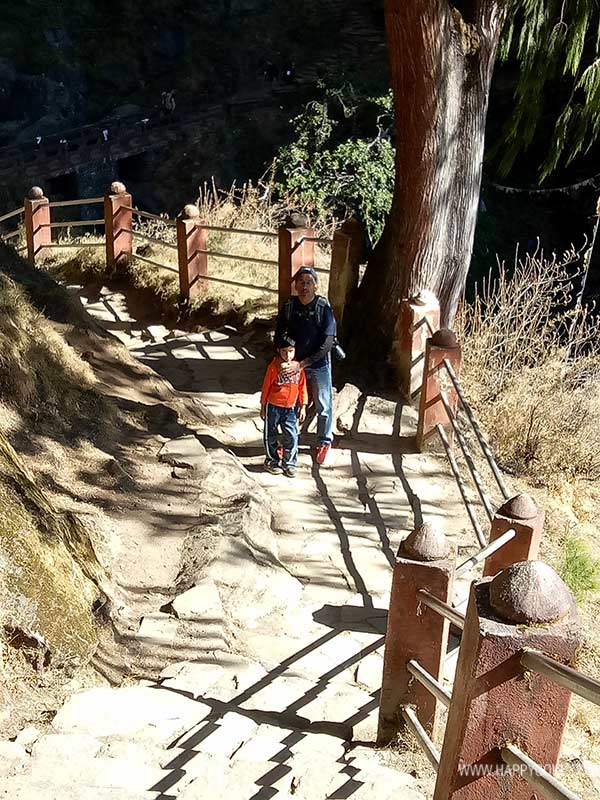
This was followed by a leisurely rafting experience across the Punakha river. We were told that Punakha Pho chu (male river) was too violent for us, as we had children on board and were suggested a ride through the cool and calm waters of the Mo chu (female river). We hired the services of the Druk rafting service, who were polite and provided all required equipment including life vests. An ideal experience with children in tow.
Tired after a day of trekking and rafting, our following day was easy-going. On our way to the city of Paro, we stopped for a walk at the Royal Botanical gardens at Lampelri. There are numerous walking trails, ranging from 20 minutes to 7 hours to choose from. The gardens are located in an actual forest, so it is a treat for nature lovers. Outdoor overnight camping is also permitted.
At Paro, we stayed at the stunning Naksel Boutique Hotel and Spa, situated on top of a hill. This was the most luxurious part of our stay. The rooms were grand, spacious and extremely comfortable. The meals too had much more variety, with Indo-Chinese and Western cuisines thrown in. The desserts were to die for…
Tiger’s Nest
True to the meaning of ‘last but not least’ and ‘save the best for last’, we headed to Tiger’s Nest on our last day in Bhutan. Perched at 900m above the Paro valley, the Taktshang Goemba or Tiger’s Nest is a must do on any visitor’s list. It does involve a bit of legwork up dusty paths – there aren’t paved roads – but it is totally worth it. The views are stunning all along, despite it getting a bit hot along the way. Remember to start as early as possible.
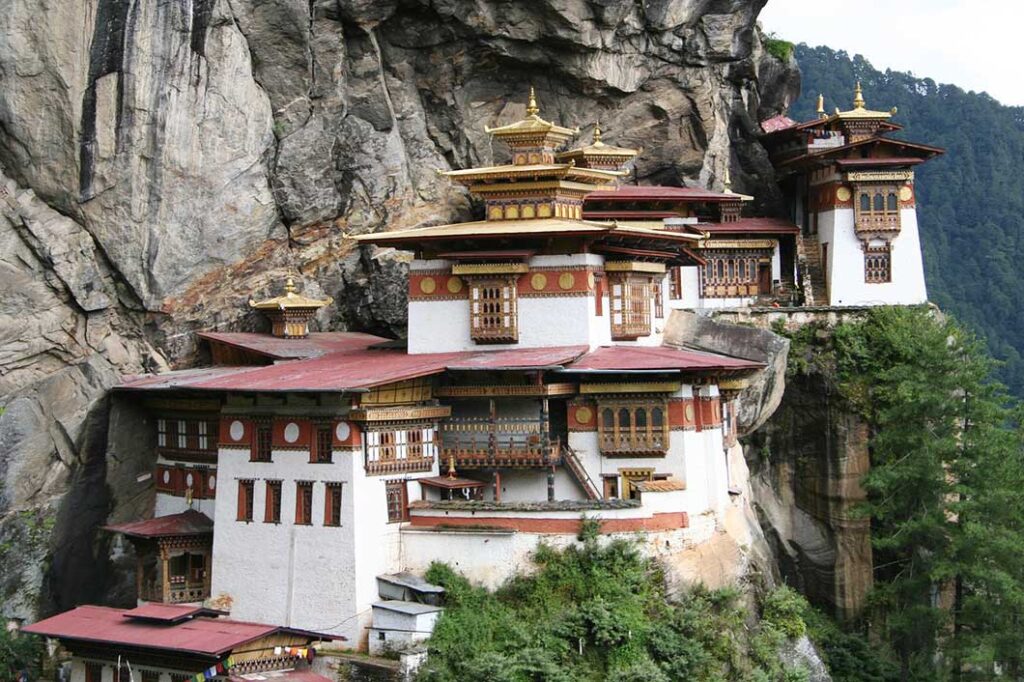
You can hike the entire way or take a horse that gets you about half the way. Most hotels lend you walking sticks, but they can be rented at the beginning of the trek too. Our son decided to bring his one back from Bhutan, as a souvenir. We did check with the hotel before doing so, and they were more than happy to part with one.
Due to the altitude, it is possible that one gets a headache, so make sure you hydrate and carry snacks/sweets.
The last part of the trek consists of 750 steps. As you are going from one mountain to the next, the steps connect you.
Note that you can’t use cameras or phones inside the Tiger’s Nest. We spent some time touring the temples before heading back. The hike down was a bit more challenging, as it is a downward dusty path with not much to hang onto. The children were truly champs and finished the entire trek in 5 hours. They went far ahead of us adults, along with the guide. There is a café at the half way mark, where you can use the washroom and take a break with a cup of piping hot tea.
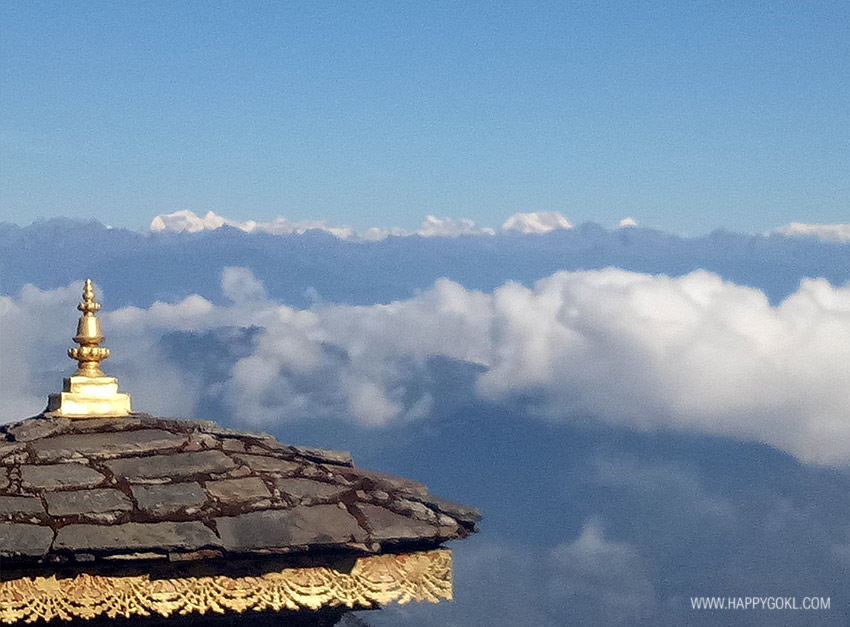
There’s much to love about Bhutan, with its incredible landscape amidst nature and clean fresh air. Check out some more places to visit in Bhutan here. As tourism is controlled, it isn’t overcrowded, even during peak seasons. Visiting Bhutan is not inexpensive, but if you have the opportunity, I would highly recommend it!
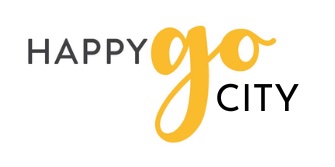

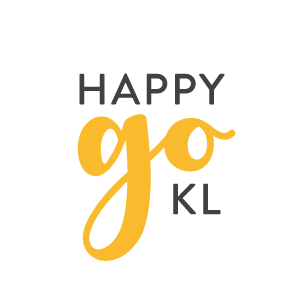

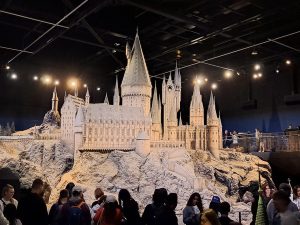
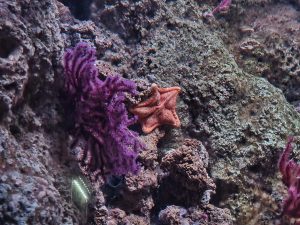
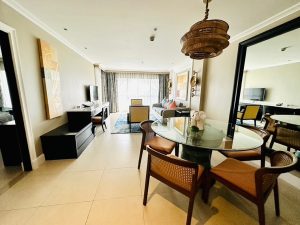
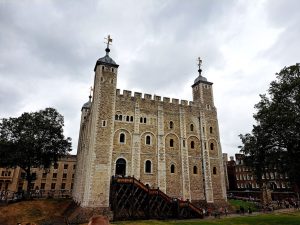




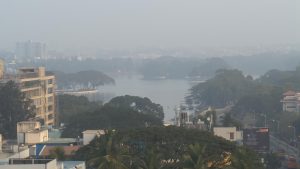
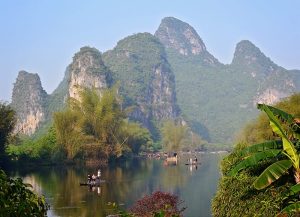
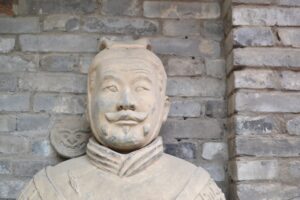


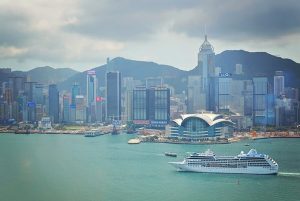
2 Responses
how to arrange Bhutan visa from KL ?
It will be arranged through your tour operator. You can’t visit Bhutan independently as a tourist.